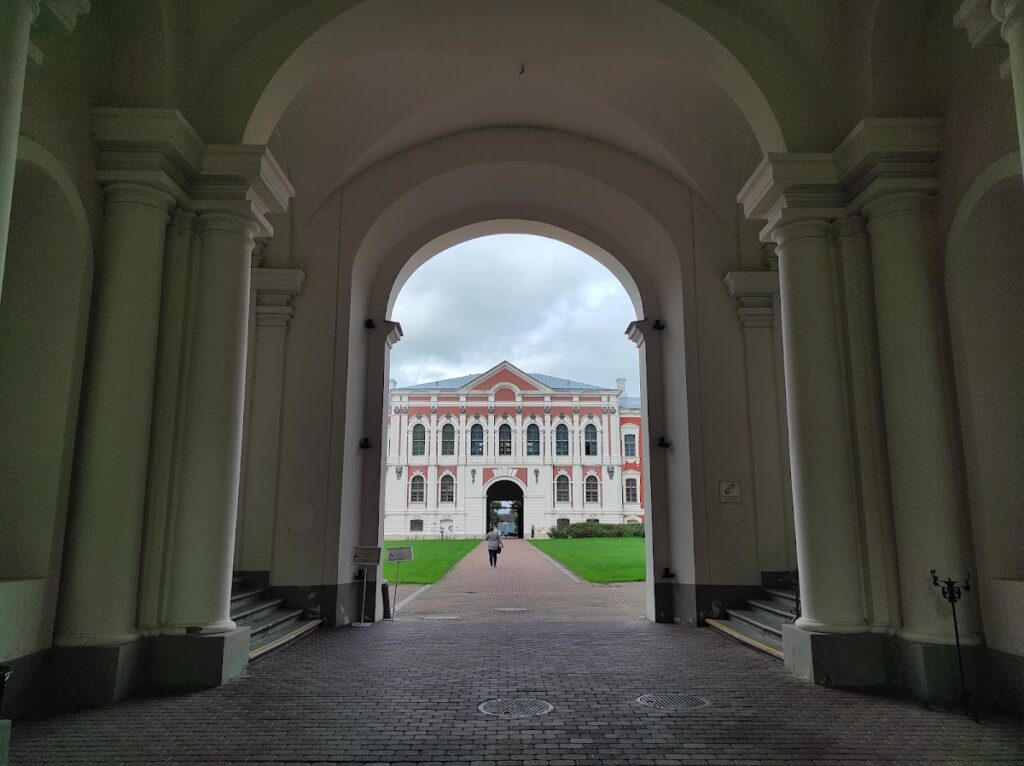Jelgava Palace: Historical Residence and Cultural Landmark in Latvia
Visitor Information
Google Rating: 4.6
Popularity: Medium
Google Maps: View on Google Maps
Official Website: www.jelgavaspils.lv
Country: Latvia
Civilization: Unclassified
Remains: Military
History
Jelgava Palace stands in the city of Jelgava, Latvia, on a flat island formed by the Lielupe River and its tributary Driksa. The site originally belonged to the Livonian Order, a medieval crusading military group that established a wooden fortress here in 1265. This early castle was destroyed by fire in 1345 and replaced by a stone stronghold that served as the residence of the Ketler dukes who ruled the Duchy of Courland and Semigallia.
In the 18th century, the palace transformed into an impressive Baroque residence under the direction of Duke Ernst Johann von Biron, the new ruler after the Ketler dynasty ended. Beginning in 1738, Biron engaged the renowned architect Bartolomeo Rastrelli to construct a grand palace that reflected his court’s status in the capital then known as Mitava. Work proceeded in two main stretches, from 1738 to 1740 and later between 1763 and 1771, with a pause caused by Biron’s arrest and exile in 1740. After his return, the architect Severin Jensen added some classical touches to the palace’s design.
Following its completion in 1772, Ernst Johann von Biron lived there until his death shortly thereafter. His successor, Duke Peter Biron, relinquished the duchy to the Russian Empire in 1795, ending its independent rule. Subsequently, Jelgava Palace served as the residence of Russian governors overseeing Courland until 1915. Over the years, the palace hosted figures such as King Louis XVIII of France, who took refuge there intermittently between 1798 and 1807, and the occultist Count Alessandro Cagliostro in 1779. During the Napoleonic Wars of 1812, the building was converted into a hospital for the French army’s Prussian corps.
The palace endured destruction twice in the early 20th century: an arson attack by the West Russian Volunteer Army in 1919 and heavy damage during World War II combat in 1944. Restoration efforts began before the war in the late 1930s and resumed after 1956, though the original interiors were irretrievably lost. Since 1939, the palace has housed what is now the Latvian University of Life Sciences and Technologies, with ongoing efforts to preserve its historical importance and celebrate the duchy period.
Remains
Jelgava Palace occupies an expansive area of approximately 2.2 hectares, originally laid out in a three-wing U-shaped formation typical of Baroque palatial architecture, later completed by adding a fourth wing in 1937 that encloses a central courtyard. Constructed using stone, dolomite, and brick, it incorporates elaborate craftsmanship including carved wooden doors, parquet flooring, and tiled stoves produced by Austrian artisans. The palace facade, relatively reserved in design compared to other works by Rastrelli, subtly showcases Baroque style with select classical features introduced by Severin Jensen.
The interior decoration once featured artworks by Latvian painter F.H. Barizien, as well as Berlin sculptor Johann Michael Graff and Italian artist D’Angeli, combining to create a rich artistic environment now lost due to 20th-century fires. The structure contains 669 rooms, framed by 674 windows and 615 doors, with 25 drainage pipes lining the roof to manage precipitation.
Beneath the palace lies the ducal crypt, established in 1820 in the southeastern basement corner. It holds 30 coffins—24 made of metal and 6 of wood—dating from 1569 through 1743 and belonging to members of the Ketler and Biron families. These sarcophagi stand out as important examples of Baroque and Mannerist decorative art, reflecting the funerary customs of the duchy’s former rulers.
Surrounding the palace is an extensive park developed beginning in 1817 on what had been the Livonian Order’s fortifications. The landscape embraces romantic elements such as canals and bridges, including an island habitat for wild horses, along with mature trees that have stood for centuries, including horse chestnut, oak, and poplar species.
Archaeological investigations at the site have revealed a variety of artifacts illustrating its layered history, including coins, fragments of Dutch clay pipes, fragments of cooking pottery, and cast-iron columns. A particularly notable discovery in 2003 was a human skull embedded within a wall, providing tangible evidence of the complex human story woven into the palace grounds over many centuries.










